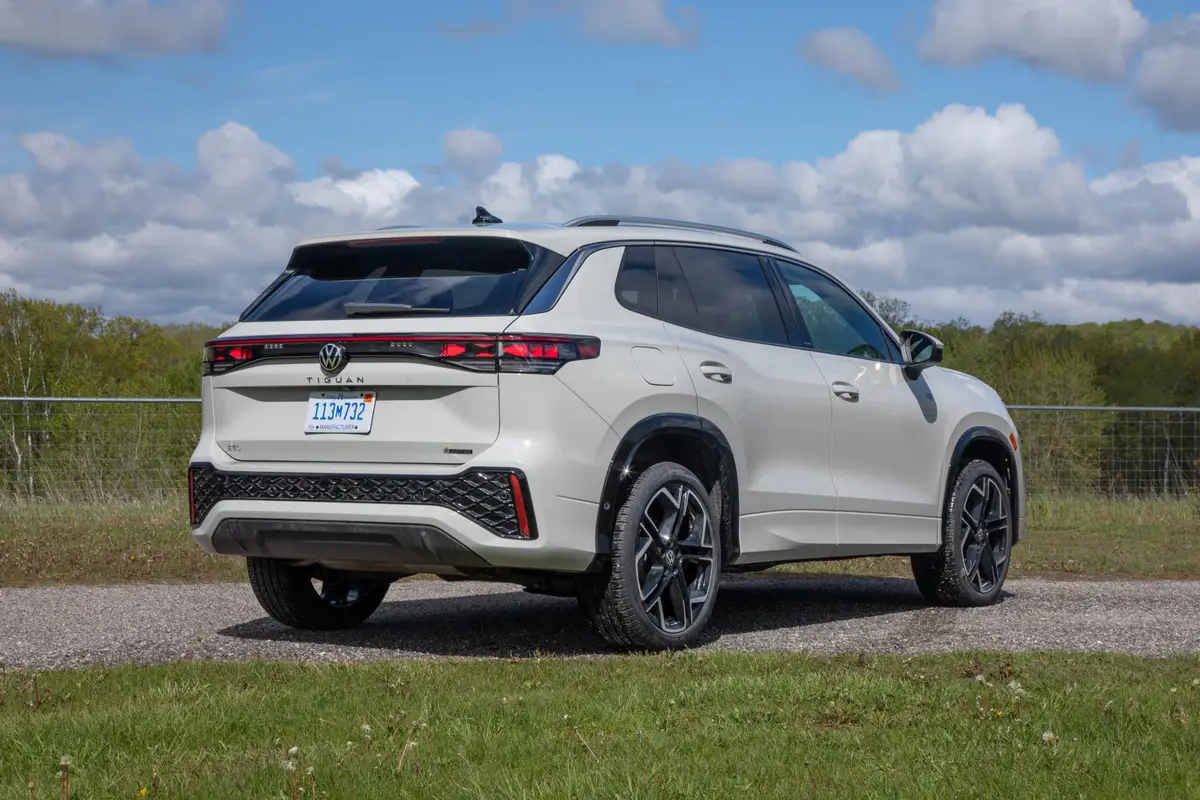Orlando Sentinel's view
The battle for car of the year honors in 1992 could be a real humdinger.
Three American cars have emerged as heavyweight contenders for the 1992 title: the new Cadillac Seville, the redesigned Ford Crown Victoria and Pontiac’s new Bonneville, this week’s test car.
The 1992 Bonneville is radically different from last year’s version.
Not only is the Bonneville’s styling different, but its trim levels and pricing also have changed. And for the first time, you can order the Bonneville with a supercharged engine.
The test car, a base model SE, actually costs about $300 less than last year’s similar LE model once the price is adjusted for the extra equipment that is now standard, said Pontiac’s Ed Lechtzin.
If you have doubts that Detroit is on the rebound, check out this Pontiac.
Here’s proof that the magic that made Detroit hum in years past is back.
ENGINE, PERFORMANCE
A 170-horsepower version of GM’s venerable 3800 TPI (tuned port injection) V-6 engine is the only power plant offered in the Bonneville SE and SSE this year. The top-of-the-line Bonneville SSEi – slated for production this fall – offers a supercharged version of the 3800 engine that develops 205 horsepower.
However, the standard engine provides a great mix of performance and economy. Autoweek magazine says the Bonneville SE will do 0 to 60 mph in about 10 seconds, which is respectable for a car weighing 3,500 pounds.
What is more than respectable are the EPA ratings for the new Bonneville: 28 miles per gallon highway, 18 city.
The 3800 is a gem of an engine. Powerful, smooth, and with plenty of torque, the V-6 has more than enough muscle to hustle the Bonneville up the ramp to the interstate or to easily glide past slower traffic.
There is no choice as far as transmissions go; all Bonneville’s come with GM’s terrific four-speed automatic transmission. Shifts are smooth.
STEERING, HANDLING
This is the Bonneville’s 35th year on the market – and undoubtedly its finest. It handles superbly, rides quietly over bad pavement and cruises effortlessly regardless of weather and road conditions.
Anti-lock brakes are available as an option on the SE but come standard on SSE and SSEi models. The test car did have the optional ABS brakes, which come as part of a ($551) sport package that also includes a stiffer suspension set-up and dual exhausts.
The brakes, discs up front and drums in the rear, are not overpowering, but the pedal has a solid, progressive feel and will bring the car to a halt quickly and without much trauma. The ABS unit, however, is a bit noisy.
The power-assisted rack and pinion steering is crisp. Pontiac engineers gave it a moderately heavy feel, but that helps give the car its solid road manners. The turning circle is 39.4 feet, enabling the car to easily get out of most tight spots.
In most instances, fast cornering presents no challenges the Bonneville can’t handle. You’ll have difficulty believing you are in a front-wheel-drive car. The Bonneville is just as sure-footed and easy to drive and maneuver as any similar sized rear-wheel-drive sedan.
FIT, FINISH, CONTROLS
If you admire the layout and design of European sports sedans, you’ll be pleased with the creative, user-friendly way Pontiac engineers overhauled the Bonneville’s interior.
There are two concealed cup holders in the front door panel map pockets and one that folds out from the center console. Rear seat passengers can fold down an arm rest, which contains two more cup holders. The test car featured an overhead console with built-in compartments for sunglasses and a garage door opener. It even has a lighter-type plug for an electrical accessory such as a radar detector.
Bonnevilles equipped with the optional electric sunroof do not have this overhead console.
The power seats have multiple adjustments and can be operated easily. In tead of placing the switches onthe side of the seats where they would abut the door, Pontiac put them on the lower front edge of the seat cushion.
The cup holders, switches and storage compartments are small items, but they underscore how closely Pontiac looked at the Bonneville’s interior.
There’s a complete, glare-free, easy-to-read analog gauge package that is housed in a one-piece, rattle-free dash.
This year’s Bonneville has a driver’s side air bag, but Pontiac still found away to keep the popular steering-wheel-mounted radio control switches.
Rear-seat passengers – no matter what size – likely will find ample leg, foot and head room.
There are at least a dozen other small features that make the Bonneville a superb car. To name just two, there is a cargo net in the trunk that keeps packages from sliding around, and an access door concealed in the rear seats that allows long items, such as skis, to be carried inside the vehicle.
The new Bonneville, with its excellent build quality, superb drivetrain, dynamic, aggressive styling and terrific interior is a tour de force from Pontiac.
If you are in the market for a roomy, economical sporty sedan in the $20,000 price range, test drive the Bonneville first, test drive the Bonneville last – but what ever you do, don’t leave it off your list.
It is a fabulous car and a great value.
Latest news



